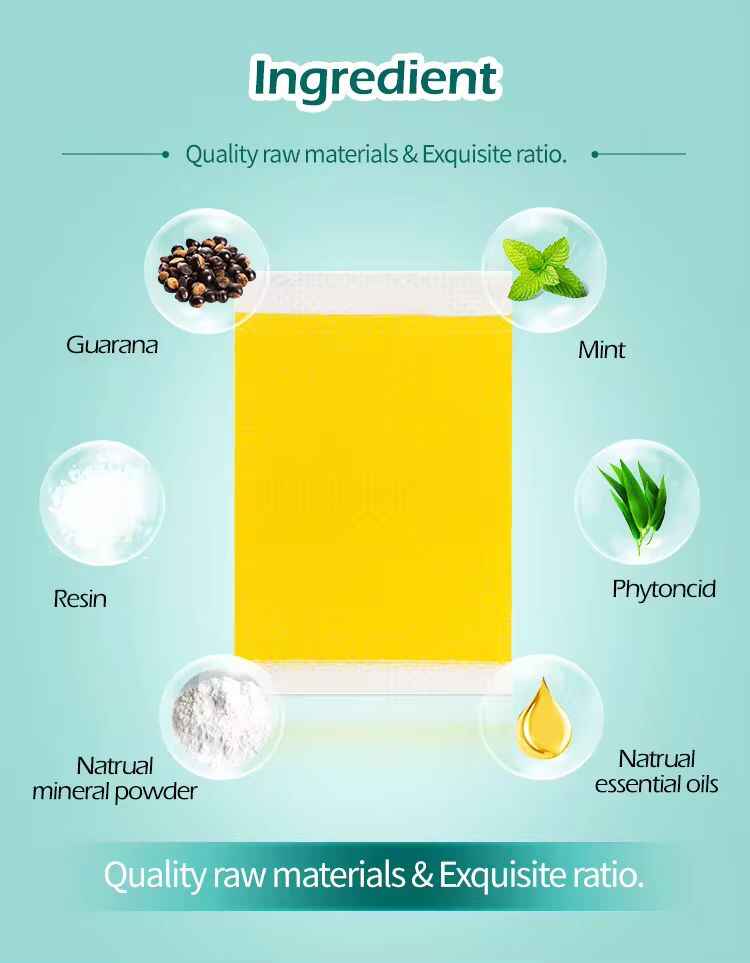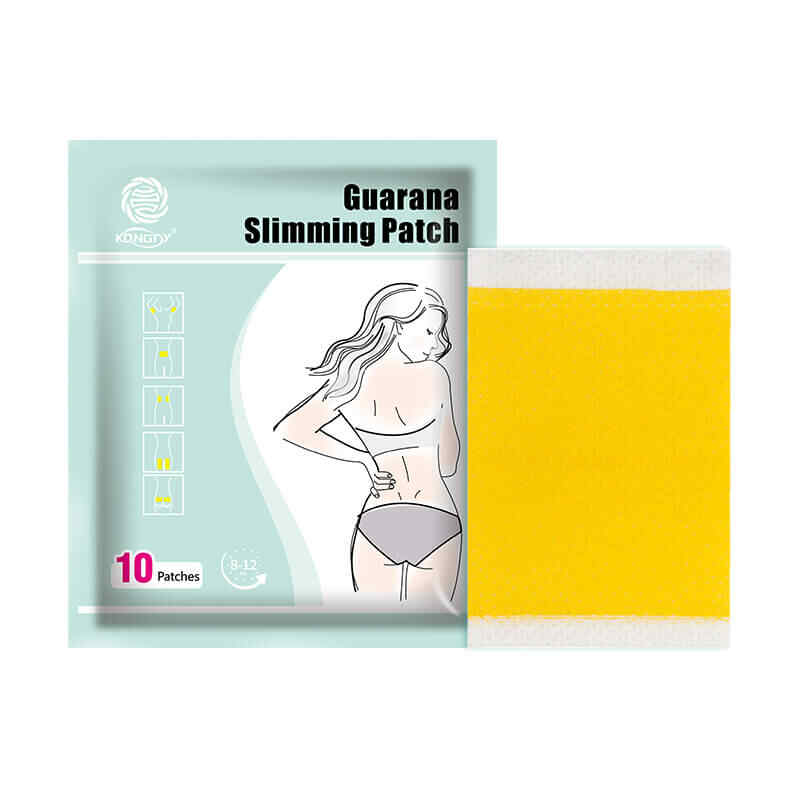What is the Difference Between Custom and Private Label Transdermal Slimming Patches?
The slimming and weight management market is evolving rapidly, with transdermal slimming patches becoming one of the most innovative product categories. These patches deliver active ingredients through the skin, offering a discreet, convenient, and effective way to support weight loss goals. As businesses look to enter or expand in this market, one of the most common decisions is whether to choose Custom transdermal slimming patches or Private Label transdermal slimming patches.
Both approaches offer unique advantages, but they differ significantly in cost, flexibility, time-to-market, and branding opportunities. In this article, we’ll break down the differences between Custom and Private Label solutions, highlight the role of transdermal slimming patches OEM partners, and explain how choosing the right transdermal slimming patches Manufacturer or Supplier can determine the success of your brand.

Understanding the Role of Transdermal Slimming Patches OEM
Before diving into Custom vs. Private Label, it’s important to understand what an OEM (Original Equipment Manufacturer) does. A transdermal slimming patches OEM partner is responsible for producing patches on behalf of brand owners. They handle:
Product formulation
Material sourcing
Regulatory compliance
Quality control
Packaging solutions
Working with an OEM gives businesses access to advanced technology and expertise without the need to set up their own factories. The choice between Custom and Private Label transdermal slimming patches depends on the level of control and investment a brand owner wants.
What Are Private Label Transdermal Slimming Patches?
Private Label transdermal slimming patches are pre-developed, ready-made formulations produced by a transdermal slimming patches Manufacturer. Businesses can quickly enter the market by rebranding these products with their own logo, packaging, and marketing.
Key Features of Private Label Slimming Patches:
Faster Market Entry: Since the formula is already tested and approved, companies can launch products quickly.
Lower Costs: Minimal investment in research and development.
Pre-Tested Formulations: Safety and efficacy data are often already available.
Scalability: Easy to scale up production as demand grows.
Who Should Choose Private Label?
Private label is ideal for startups, small to medium-sized businesses, or brands that want to test the market before investing heavily in R&D.
What Are Custom Transdermal Slimming Patches?
Custom transdermal slimming patches are developed from scratch according to the brand owner’s specifications. Working with a transdermal slimming patches OEM or Supplier, businesses can design unique formulas, select ingredients, and even develop new technologies.
Key Features of Custom Slimming Patches:
Unique Formulation: Tailored active ingredients (e.g., herbal extracts, caffeine, green tea) for differentiation.
Exclusive Ownership: The formula belongs to the brand, creating exclusivity.
Greater Branding Power: Customization extends to patch design, size, materials, and packaging.
Market Positioning: Suitable for premium, niche, or specialized product lines.
Who Should Choose Custom?
Custom is best for established brands with strong market presence, or businesses looking to create a unique, innovative slimming patch that competitors cannot easily replicate.
Custom vs. Private Label: Side-by-Side Comparison
| Aspect | Private Label Transdermal Slimming Patches | Custom Transdermal Slimming Patches |
|---|---|---|
| Time-to-Market | Fast (weeks) | Longer (months or more) |
| Cost | Low to moderate | Higher (due to R&D) |
| Formula Ownership | Shared with OEM | Exclusive to brand |
| Flexibility | Limited | Highly flexible |
| Risk Level | Lower | Higher (but with greater reward potential) |
| Best For | New businesses, rapid entry | Established brands, innovation-driven companies |
How Transdermal Slimming Patches Manufacturers Support Both Models
A reliable transdermal slimming patches Manufacturer can provide both Private Label and Custom solutions. Their support includes:
For Private Label: Offering a catalog of pre-developed products, ready for branding.
For Custom: Providing R&D labs, testing facilities, and regulatory expertise to bring new ideas to life.
Whether choosing Private Label or Custom, the quality of the transdermal slimming patches Supplier determines product safety, compliance, and overall success.
Regulatory Considerations
Regulatory compliance is critical in both models, but the requirements differ:
Private Label transdermal slimming patches usually come with pre-verified compliance documentation, making entry smoother.
Custom transdermal slimming patches require additional testing and approval, especially if new active ingredients are introduced.
Partnering with an experienced transdermal slimming patches OEM ensures that both Private Label and Custom products meet FDA, CE, or NMPA standards, depending on the target market.
Market Positioning and Branding
Private Label
Suits mass-market positioning.
Focuses on affordability, accessibility, and quick availability.
Relies more on branding and marketing than product differentiation.
Custom
Ideal for premium or niche markets.
Offers unique selling points (exclusive ingredients, eco-friendly patches, innovative delivery systems).
Enhances long-term brand reputation by offering exclusive solutions.
Choosing Between Custom and Private Label
When deciding between Custom transdermal slimming patches and Private Label transdermal slimming patches, ask these questions:
What is your budget for product development?
Do you need to launch quickly, or can you wait for R&D?
Is your target market price-sensitive or quality/innovation-driven?
Do you want exclusivity in your product line?
Are you prepared to handle longer regulatory approval processes?
Your answers will guide whether Private Label or Custom is the right path.
The Role of a Reliable Transdermal Slimming Patches Supplier
A trustworthy transdermal slimming patches Supplier ensures that whether you choose Private Label or Custom, you receive:
Consistent product quality
On-time delivery
Regulatory documentation
Scalable production capacity
Suppliers with global experience can also help brands expand internationally, bridging compliance and distribution challenges.
Conclusion
The choice between Custom transdermal slimming patches and Private Label transdermal slimming patches depends on your business goals, budget, and market positioning.
Private Label offers speed, cost efficiency, and simplicity—ideal for businesses testing new markets.
Custom provides exclusivity, innovation, and long-term branding advantages for companies ready to invest in differentiation.
Ultimately, success lies in choosing the right transdermal slimming patches OEM and Supplier. A trusted transdermal slimming patches Manufacturer will guide you through product development, compliance, and market entry, ensuring your brand thrives in the competitive slimming products industry.
Related Questions and Answers
Q1: Which is better for startups: Custom or Private Label transdermal slimming patches?
A1: Private Label is usually better for startups due to lower costs and faster market entry.
Q2: Can I switch from Private Label to Custom transdermal slimming patches later?
A2: Yes, many businesses start with Private Label and later invest in Custom solutions for differentiation.
Q3: Do Custom transdermal slimming patches take longer to get approved?
A3: Yes, because unique formulations often require additional safety and regulatory testing.
Q4: What role does a transdermal slimming patches OEM play in product compliance?
A4: They handle testing, documentation, and regulatory approvals to ensure global market readiness.
Q5: Why is choosing the right transdermal slimming patches Supplier important?
A5: Because reliable suppliers guarantee quality, compliance, and scalability, which are critical for business success.






